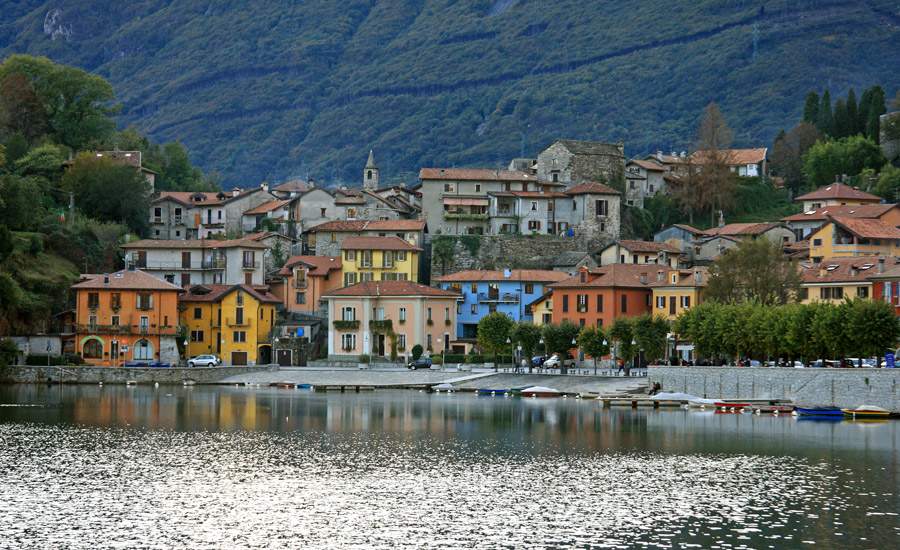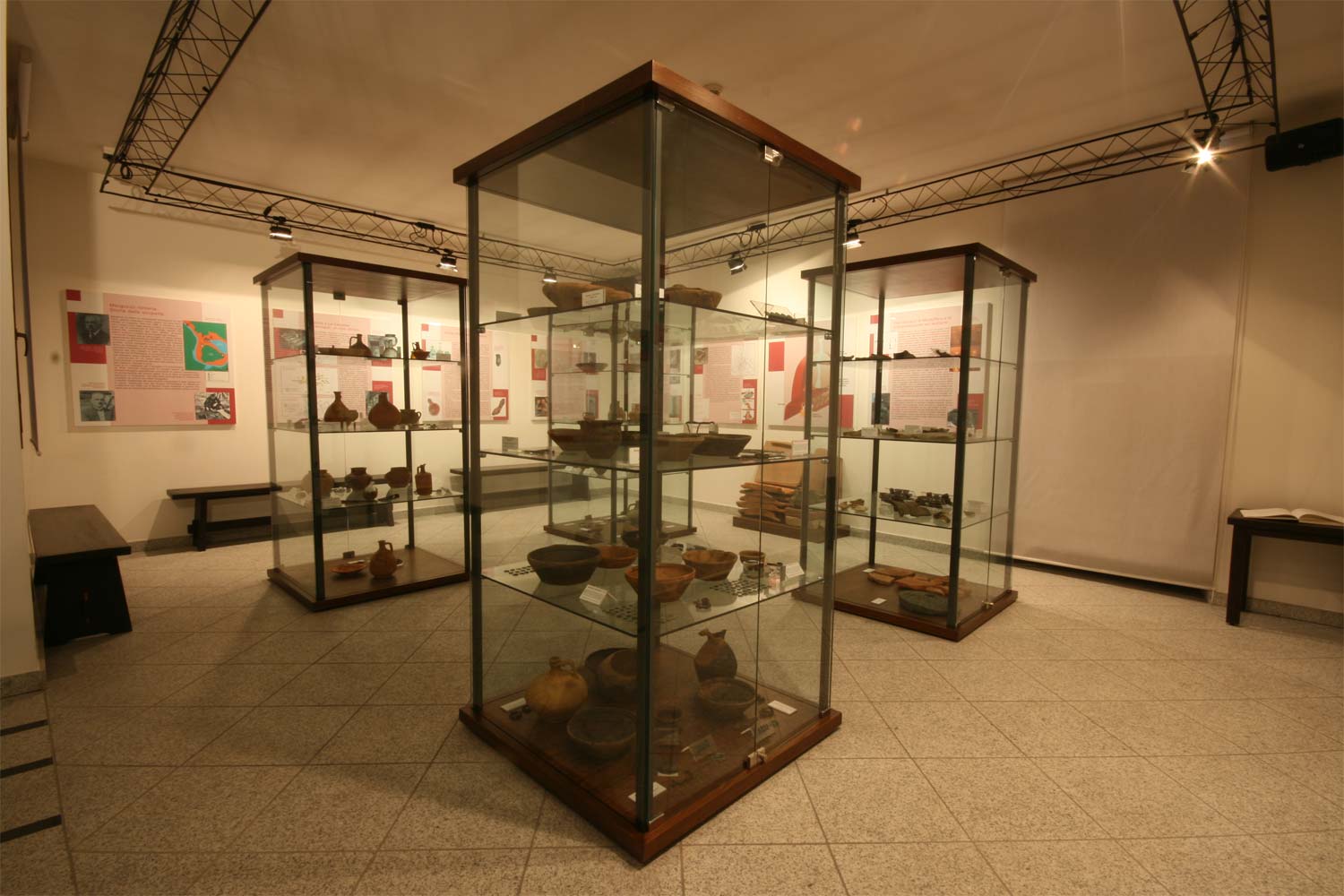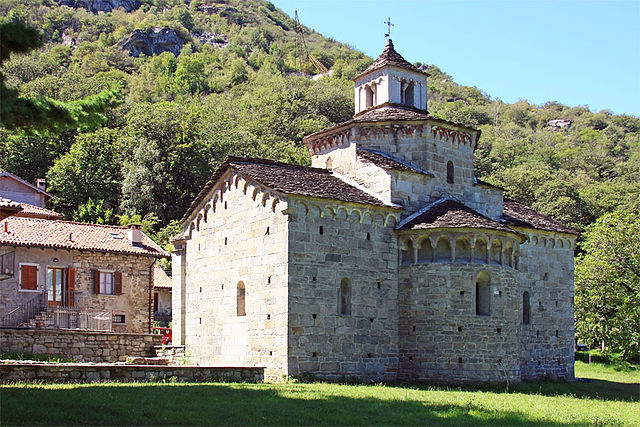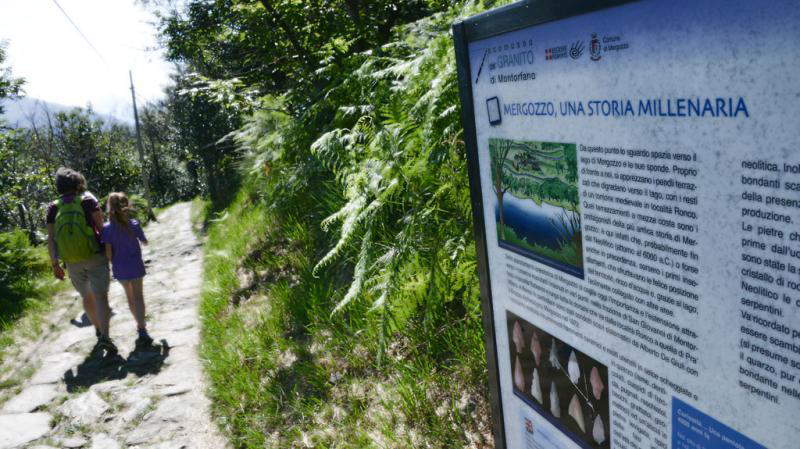A short distance from Lake Maggiore is Lake Mergozzo. We are in Piedmont, in the Leopontine Alps, and Lake Mergozzo is renowned for its waters, which are among the cleanest and clearest of European lakes. The lake, which was once part of Maggiore, is named after the municipality that faces it, is substantially small in size (one kilometer by two and a half kilometers with a maximum depth of 74 meters, with a perimeter of about 6 km), and is surrounded by verdant and wooded hills, mountains and mountains (the Montorfano reaches an altitude of 800 meters, and then the Val Grande with its peaks from 1500 meters high, and the Corni di Nibbio), and is a favorite destination for slow and open-air tourism, relaxation and nature between walking, trekking and biking but also all water sports and fishing (present are chubs, royal perch, agons and carp that reach even weights of 12 kg). But it is also enough, simply, to admire the scenery on a deck chair by the side of the lake. The town gives its name to two winds: the Mergozzo and the Mergozzino (widely ranked on sailing enthusiasts’ sites for trips on Lake Maggiore). In addition, all the marble used to build Milan Cathedral comes from nearby: the Candoglia marble quarry, a hamlet of Mergozzo. By contrast, white granite from Montorfano, another locality near the lake, is found in much of Piedmont’s architecture: porticoes and colonnades in Turin and the bridge over the Po River dedicated to Princess Isabella of Bavaria are full of it. Here are five stops for an excursion to Lake Mergozzo.
Colorful low-story stone houses with sloping roofs: the village of Mergozzo sits on the western shore of the lake with a beautiful lakefront to walk along, with small boats fanned out on the shallows at the edge of Piazza Cavour. Here is the symbol of Mergozzo: a centuries-old elm tree that is hollow inside and now supported by iron poles but is still alive and well, it’s fair to say. Campsites and equipped facilities are on the opposite side, sandy or grass beaches abound. We are 214 meters above the sea, five kilometers from Gravellona Toce, twelve from Stresa and thirty from Domodossola, one hour and 40 minutes from Turin, one hour from Milan, two steps from Lake Maggiore and one from Lake Orta. Thus suitable to be reached for a leisure time and full of things to see nearby. There is no shortage of restaurants all along the perimeter of the lake with romantic overlooks and fixed appointments in summer with village festivals such as “La Pesciolata” with fish in July. The “fugascia,” on the other hand, is the typical local sweet focaccia. In the village there are several churches of considerable interest: the Romanesque church of Santa Marta dating back to the 12th century, the 17th-century Beata Vergine Assunta, which contains several works of art inside, including the altarpiece made in 1623 by the Novara painter Carlo Cane, depicting the Madonna of the Rosary with St. Catherine and St. Dominic on either side, and the village of Mergozzo.

Since September 2004 there has also been an archaeological museum in Mergozzo where prehistoric remains found on the terraced slopes of Montorfano are preserved: it is the Civic Archaeological Museum of Mergozzo. Two necropolises have also been found in Mergozzo, one along the direct route to Lake Maggiore and the other toward Ossola, a brick kiln in the Rubianco locality, and a sacred complex and a large building in the Candoglia locality, where there are quarries of marble, green granite, and white granite. As well as Romanesque finds that grasped its usefulness as a settlement given its strategic location.

Located in Montorfano, at the foot of the mountain of the same name, the church of St. John the Baptist is certainly the most interesting house of worship in the Lake Mergozzo area. It is a Romanesque church, first mentioned in the year 885, but whose present appearance dates back to the 11th century. It was built with granite quarried from nearby quarries and has a single-nave interior, closed at the top by cross vaults, a semicircular apse, and an octagonal dome, topped by a lantern. Outside, the perimeter is decorated with hanging arches typical of Lombard Romanesque. Also present are corbels supporting parts of the vaults, which do not rest on columns but on these elements within the walls: this is a rare feature in northern Italian Romanesque.

The Sentiero Azzurro, an ancient mule track, is a historical-environmental path with long paved sections and with low walls on the sides that winds through the woods along the eastern slope of Montorfano and has a feasibility for all types of tourists (very shady but not suitable for strollers). It is three kilometers long, with an elevation gain of 150 meters, and from the village of Mergozzo you can reach the village of Montorfano in an hour or so. Here there is a small treasure of Romanesque architecture amid the sparse group of houses present: it is the church of St. John the Baptist. It rests on the foundations of an early Christian baptismal complex that could be considered as the primitive parish church of Mergozzo. On the trail there are areas for resting with benches overlooking the lake, and information panels explain the geological history of the area and the techniques of quarrying and transporting granite.

An hour and a quarter drive from the lake, one can go to admire the Toce Waterfall, in the municipality of Formazza, at an altitude of 1675 meters. Here the Toce makes a 143-meter-high leap over a base of 60 starting at 20 at the top of the rocky recline: one of the most spectacular waterfalls in the Alps. Since the 1930s, the waters of the Toce have been used for ideoelectric power generation, which is why the waterfall can be seen in its full, natural grandeur only during certain, brief, periods of the year (to find out about them you can consult the Pro Loco or the municipality’s website). But before that it had been extolled throughout Europe. Richard Wagner, on his trip to Italy from Switzerland in 1852 spoke of it as a fascination of “overpowering beauty,” and Gabriele d’Annunzio, Giosuè Carducci, De Saussure, Stoppani, Queen Margherita, Vittorio Emanuele III, also had words for it, Dominating the ’jump’ is a hotel built in 1923 in full Deco style by architect Piero Portaluppi, one of the greatest exponents of that style.

 |
| Lake Mergozzo, what to see: 5-point itinerary |
Warning: the translation into English of the original Italian article was created using automatic tools. We undertake to review all articles, but we do not guarantee the total absence of inaccuracies in the translation due to the program. You can find the original by clicking on the ITA button. If you find any mistake,please contact us.